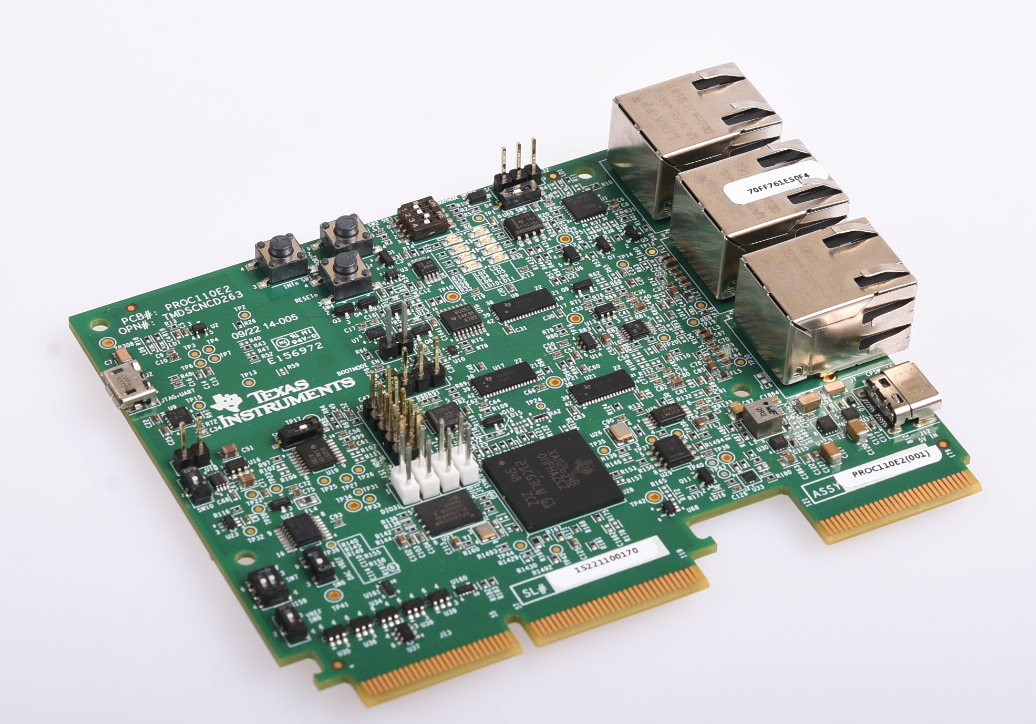TIDUF23 may 2023
- Description
- Resources
- Features
- Applications
- 5
- 1System Description
- 2System Overview
-
3Hardware, Software, Testing Requirements,
and Test Results
- 3.1 Hardware Requirements
- 3.2 Test Setup
- 3.3 Test Procedure
- 3.4 Test Results
- 4General Texas Instruments High Voltage Evaluation (TI HV EVM) User Safety Guidelines
- 5Design and Documentation Support
- 6Terminology
2.4.1.2 Microcontroller – Sitara™
The AM263x Control Card Evaluation Module (EVM) is an evaluation and development board for the Texas Instruments Sitara™ AM263x series of microcontrollers (MCUs). This EVM provides an easy way to start developing traction inverter designs on the AM263x MCUs with on-board emulation for programming and debugging as well as buttons and LED for a simple user interface. The control card also enables header pin access to key for rapid prototyping.
The Control card plugs directly into the Wolfspeed main control board and is fully supported with software for customers to quickly develop their traction inverter designs to maximize the performance and integration built into the AM263x MCUs.
 Figure 2-3 AM263x Sitara™ Control
Card
Figure 2-3 AM263x Sitara™ Control
Card